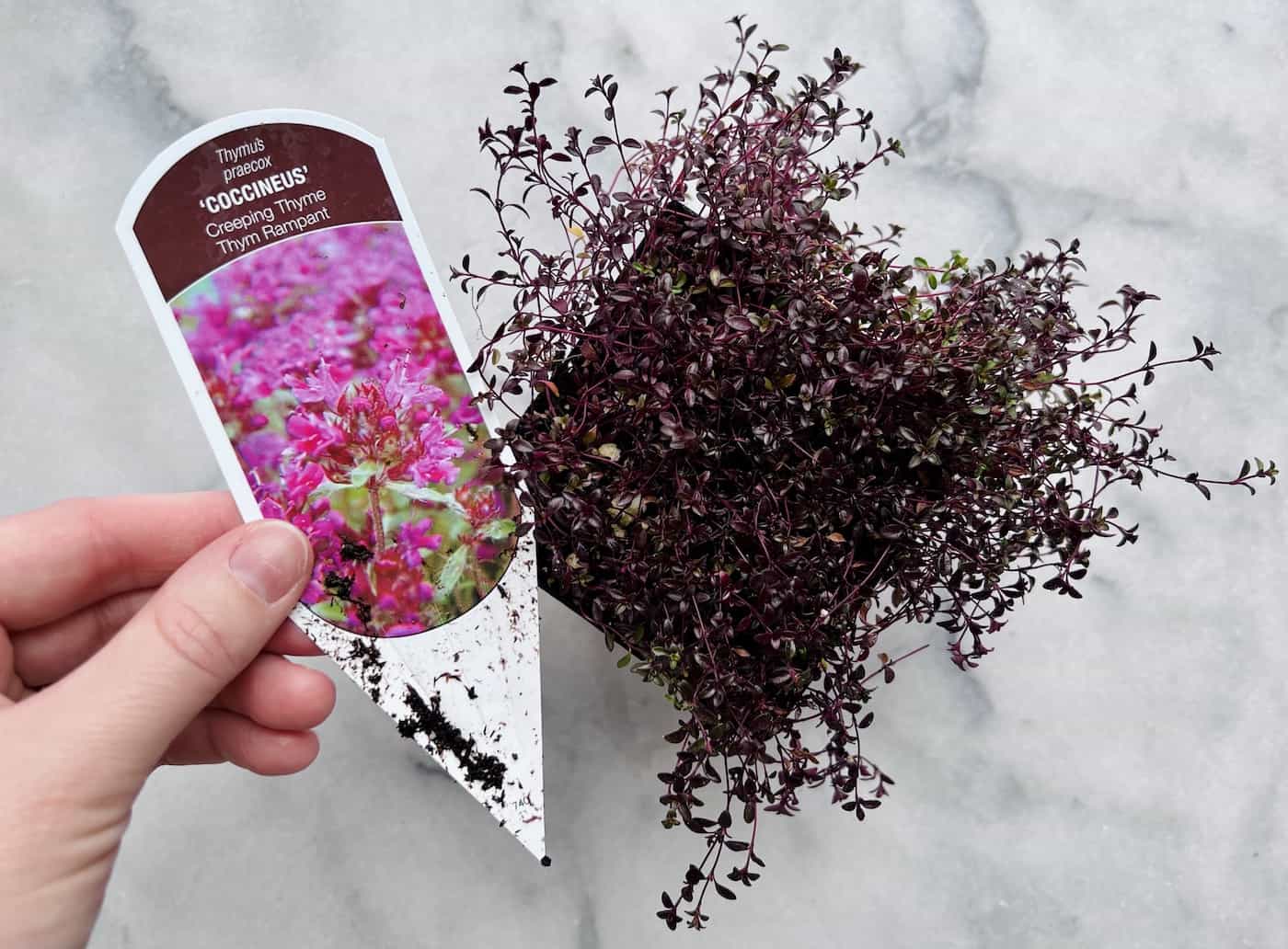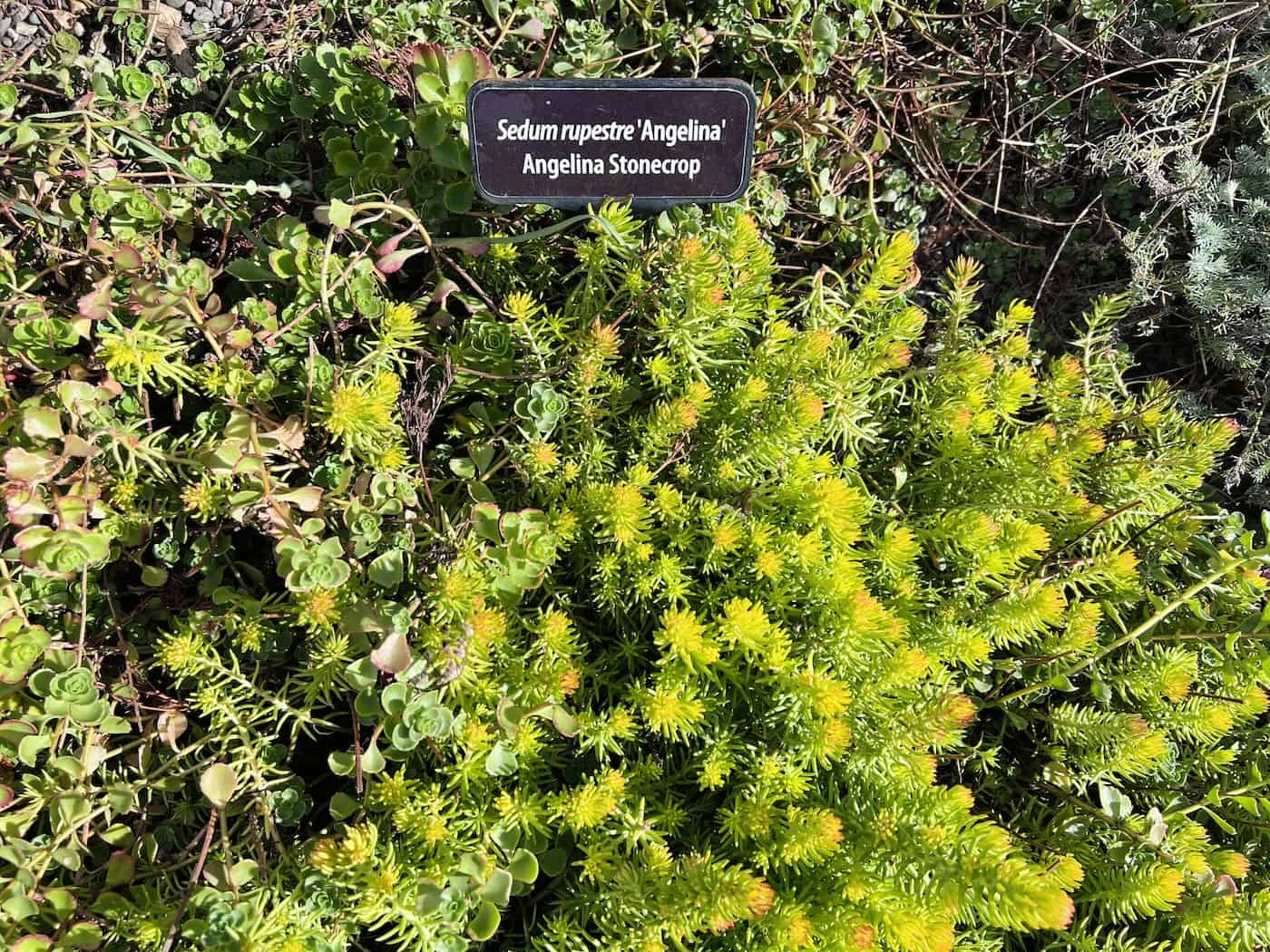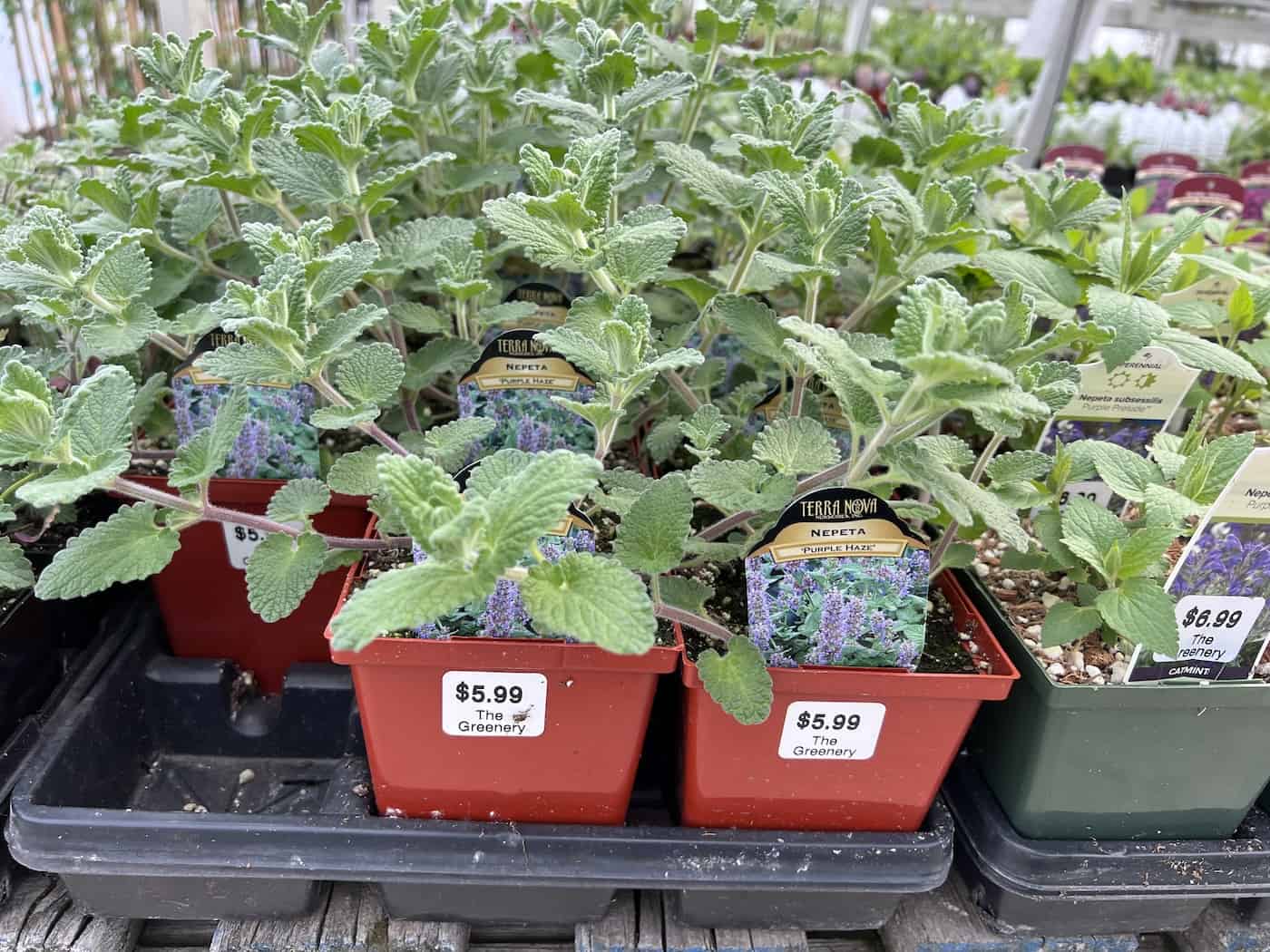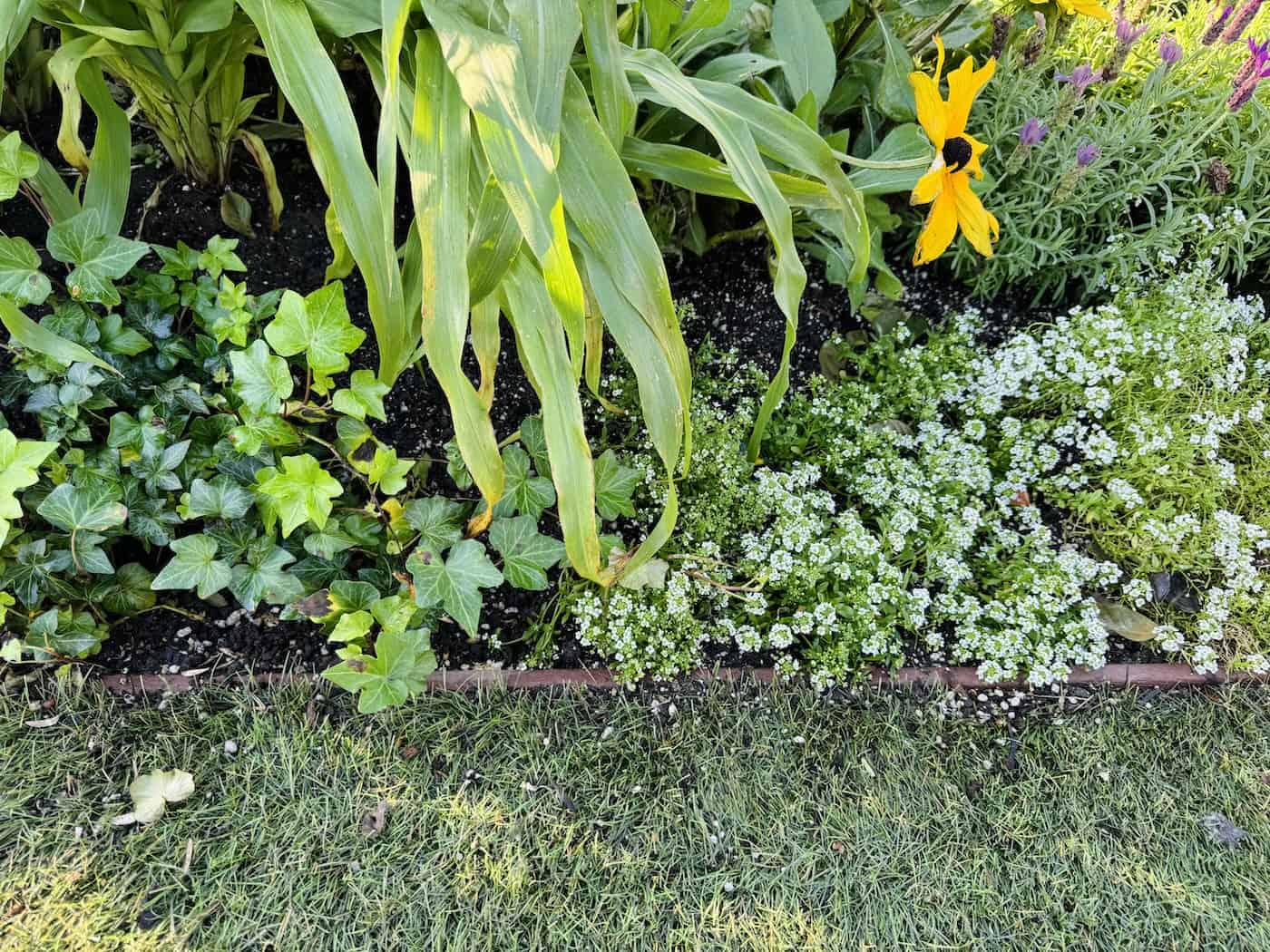Ground cover plants are low-growing species that can beautifully decorate the spaces between stepping stones, fill in shady spots, or replace grass. Let’s look at over 30 low-maintenance ground cover plants suitable for sunny and shady spots, drought-tolerant areas, foot traffic, and even wildlife-friendly gardens.
Introduction to ground cover plants
Ground cover plants are a fantastic way to enhance your garden’s beauty while reducing the time and effort spent on maintenance. Ground covers can act as living mulches, keeping the soil surface cool and shaded while simultaneously keeping weeds down. With options for sun or shade, drought-tolerant varieties, erosion control, foot traffic tolerance, weed suppression, and wildlife-friendly options, there’s a ground cover plant for every need and garden condition.
Here’s a list of common ground cover plants:
- Creeping thyme
- Periwinkle (Vinca minor)
- Ajuga (Ajuga reptans)
- Sweet woodruff (Galium odoratum)
- Dead nettle (Lamium maculatum)
- Sedum (Sedum spp.)
- Creeping Jenny (Lysimachia nummularia)
- English ivy (Hedera helix)
- Pachysandra (Pachysandra terminalis)
- Bishop’s weed (Aegopodium podagraria)
These plants are widely used for ground cover due to their low maintenance, spreadability, and aesthetic appeal.

Ground cover plants for sunny locations
Several popular ground cover plant options flourish in sun-kissed areas of your garden. With their colorful blooms and foliage, these low-maintenance plants are an ideal choice for busy gardeners. Some of the best ground cover plants for sun include:
- Creeping thyme
- Ice plant
- Basket-of-gold
- Creeping phlox
Each of these plants offers unique characteristics that will bring life and color to your sun-drenched spaces.
Creeping thyme
Creeping thyme, a remarkable low-growing herb, spreads rapidly, curbs weeds, and enlivens rock gardens and pathways. This tenacious perennial thrives in full sun, is cold hardy, and can grow in even the poorest of soils. Once established, it’s highly drought-tolerant. The beautiful pink, white, or purple flowers emerge in late spring and early summer, attracting pollinators to your garden.
Ice plant
Ideal for sunny, dry areas in your garden, ice plant is a stunning perennial succulent ground cover. Botanically known as Delosperma cooperi, it’s hardy in zones 5 to 9 and boasts vibrant fleshy leaves along with stunningly colorful flowers.
Ice plant thrives in full sun and well-drained, sandy, or loamy soil, making it highly drought-tolerant. Its vibrant flowers also attract beneficial insects and butterflies, adding a touch of life and movement to your sun-soaked spaces.
Basket-of-Gold
Basket-of-gold, also known as Aurinia saxatilis, is a stunning ground cover that features a multitude of gorgeous golden-yellow flowers in spring. Its evergreen, gray-green foliage keeps its beauty all year round, making it an excellent addition to your garden.
Basket-of-gold exhibits significant resilience, flourishing in conditions ranging from partial sun to shade and in well-drained, full-sun soil. It’s a perfect choice for sunny slopes, rock gardens, or as a border plant. The only maintenance needed is a trim after its beautiful flowering or when it looks a bit untidy.
Creeping phlox
Creeping phlox, an appealing perennial that hugs the ground, produces vibrant flowers that add a splash of color to your garden. Hardy in a wide range of climates (zones 3 to 9), low-growing phlox cultivars are perfect for rock gardens, slopes, or as a border plant.
Phlox prefers to grow in full sun but can handle partial shade. It needs well-drained, sandy or loamy soil to thrive. This low-maintenance ground cover requires little care and is easy to control, making it an excellent addition to any sun-filled garden space.

Ground cover plants for shade locations
Even in less sunlit areas of your garden, you can still cultivate attractive ground covers. There are several ground cover plants that are perfect for shade, such as:
- Sweet woodruff
- Lily of the valley
- Pachysandra
- Hosta
These shade-loving plants provide lush foliage and delicate blooms to brighten up those darker corners of your garden.
Sweet woodruff
Sweet woodruff, a fragrant ground cover requiring low maintenance, prospers in dry, shady, and acidic conditions. It’s perfect for underplanting or as an edging plant. Its delicate white star-like flowers bloom in spring, adding a touch of elegance to your garden.
Sweet woodruff’s foliage can also be dried and used to create beautiful wreaths, delightful potpourri, and other craft creations. This versatile plant is sure to become a favorite in your shady garden areas.
Lily of the valley
Lily of the valley, a rapidly spreading plant requiring minimal care, produces sweet-smelling flowers that flourish in shady areas. Its glossy green foliage and delicate white or pinkish flowers hang gracefully from its stems, creating an enchanting appearance.
Lily of the Valley is perfect for planting in shady areas where it can spread and create a lush, fragrant ground cover. While it can be invasive in some areas, its undeniable beauty and charm make it a popular choice for many gardeners.
Pachysandra
Pachysandra, a robust evergreen ground cover, thrives in shaded or partially shaded areas. It dislikes harsh direct sunlight. Resistant to deer and rabbits, its glossy, dark green leaves create a lush, carpet-like appearance in your garden. Pachysandra is perfect for planting under trees or along shady borders.
Hosta
Hosta, a sturdy ground cover requiring minimal care, flourishes in partially to fully shaded areas with well-drained soil. Its attractive foliage comes in various shades of green, blue, and even variegated patterns, making it a popular choice for adding visual interest to shady areas.
While Hosta doesn’t have showy flowers, its foliage creates a stunning backdrop for other plants in your garden. Whether planted as a border or used to fill in gaps between other plants, Hosta is a reliable and beautiful ground cover for any shady spot.

Drought-tolerant ground covers
Selecting drought-tolerant ground covers is a valuable strategy for conserving water in your garden. There are several hardy ground covers that require minimal water and maintenance, including:
- Angelina sedum
- Rock cotoneaster
- Creeping juniper
- Lamb’s ear
These plants not only save water but also add color and texture to your garden, making them an eco-friendly and beautiful choice.
Angelina sedum
Angelina sedum, an evergreen succulent ground cover requiring minimal care, brings a distinct color and texture to your garden. Its vibrant yellow-green leaves create a stunning contrast against other plants and garden elements.
This drought-tolerant plant is perfect for erosion control, as it spreads quickly and efficiently covers bare areas. Additionally, its charming yellow flowers in late summer attract butterflies, further enhancing your garden’s beauty and life.
Rock cotoneaster
Rock cotoneaster, a plant requiring minimal care, provides year-round ornamental interest to your garden. Its horizontal growth habit and unique herringbone pattern of branches make it perfect for rock gardens, walls, and as a low hedge. Rock cotoneaster is drought-resistant and requires little care, making it an excellent choice for gardeners looking for an attractive and resilient ground cover.
Creeping juniper
Creeping juniper, a low-maintenance evergreen ground cover, excels in drought tolerance and is perfect for erosion control and landscaping. Its soft, blue-green foliage takes on a stunning purplish hue in winter, adding year-round interest to your garden. Creeping juniper thrives in well-drained, sandy, or rocky soil and full sun, making it a perfect choice for xeriscaping or areas with poor soil conditions.
Lamb’s ear
Lamb’s ear, a herb resistant to drought and deer or rabbits, forms a soft, silvery ground cover in sunny areas. Its fuzzy, silver leaves are not only visually striking but also help to conserve water by reflecting sunlight and reducing water loss through evaporation. Lamb’s ear is an excellent choice for gardeners looking for a low-maintenance, drought-tolerant ground cover that adds unique texture and color to the landscape.

Ground covers for erosion control
Choosing appropriate ground covers can significantly aid in preventing soil erosion, a key step in maintaining a healthy garden. Some low-maintenance ground covers that can work to decrease surficial erosion are:
- Nepeta
- Bugleweed
- Creeping liriope
- Honeysuckle
These ground covers stabilize the soil with their dense growth and deep roots. These plants not only protect your garden but also add beauty and interest to your landscape.
Nepeta
Also known as catmint, Nepeta is a ground cover plant that’s easy to cultivate, drought-tolerant, resistant to deer, and can repel certain garden pests. Its aromatic, gray-green foliage and lovely spikes of lavender-blue flowers make Nepeta an attractive option for erosion control.
Bugleweed
Bugleweed, a rapidly growing ground cover resistant to deer, has a vigorous creeping habit. It excels in filling large, shady areas and controlling erosion. Its attractive foliage and beautiful spikes of blue, purple, pink, or white flowers in spring make it an excellent choice for preventing soil erosion while adding a touch of beauty to your garden.
Creeping liriope
With its spikey flowers and grass-like foliage, Creeping Liriope is a hardy ground cover that withstands drought. Its clumping growth habit and ability to spread make it an excellent choice for erosion control.
Honeysuckle
Honeysuckle, with its versatile nature, makes an excellent choice for ground cover. Its fragrant, colourful flowers draw in hummingbirds and butterflies as its twining vines that make it perfect for covering fences, trellises, or walls. While Honeysuckle can be invasive in some areas, its beautiful flowers and ability to attract wildlife make it a popular choice for erosion control and landscape beautification.
Ground covers for foot traffic
For ground covers resilient to foot traffic and visually appealing, consider options like:
- Turf grass
- Irish moss
- Blue star creeper
- Dwarf mondo grass
These durable ground covers not only provide a beautiful alternative to traditional grass lawns but also require minimal maintenance and care. Choose these plants to create a lush, green carpet that can handle the occasional footstep or garden party.
Blue star creeper
Blue star creeper, a ground cover plant requiring minimal care, is resistant to traffic and unappealing to deer and rabbits. It thrives in full sun to partial shade and well-drained, moist soil, making it a versatile addition to any landscape.
Dwarf mondo grass
Dwarf mondo grass, a clumping plant with grassy foliage that stands up to 6 inches tall, flourishes in both sunlit and shaded areas. Its low-growing habit makes it an excellent choice for planting between stepping stones or in areas with foot traffic. This plant is also highly adaptable and can be grown in a variety of environments, from full sun to full shade, ensuring it remains lush and beautiful in any garden setting.
Irish moss
Irish moss, with its soft, green, moss-like appearance, is a ground cover plant that offers several benefits for your garden. It tolerates light foot traffic, making it a great option for pathways or areas where people walk. It also adds a touch of enchantment to your garden with its unique and beautiful appearance.
In late spring, it produces tiny white flowers, adding a delicate and charming touch to your landscape. Plant Irish moss in moist, well-drained soil, and enjoy its resilient beauty as it gracefully withstands foot traffic.
Ground covers for weed suppression
Choosing appropriate ground covers can assist in the challenging task of controlling weeds in your garden. Some low-maintenance ground covers that can suppress weeds by blocking sunlight and preventing weed seeds from germinating include:
- Wall germander
- Bunchberry
- Spotted deadnettle
- Chinese lantern
These plants not only control weeds but also add beauty and texture to your garden, making them a practical and attractive solution for weed suppression.
Wall germander
Growing up to 12 inches, wall germander is a low hedge plant with flowers ranging in color from lavender to pink. It’s an excellent ground cover for suppressing weeds, as its dense growth and frequent pinching help keep weeds at bay.
Wall germander thrives in full sun and well-drained, sandy or loamy soil. Its beautiful flowers and ability to suppress weeds make it an attractive and practical addition to any garden.
Bunchberry
Designed for shady woodland gardens, Bunchberry is a deciduous shrub sporting glossy leaves and white flowers akin to dogwood. Its dense growth habit and ability to spread rapidly make it helpful in suppressing weeds and preventing them from taking over your garden. Bunchberry also produces bright red berries in fall, adding a touch of seasonal interest to your landscape.
Spotted deadnettle
Spotted deadnettle, a ground cover plant requiring minimal care, features splendid blossoms and silver leaves. Its dense growth habit helps to suppress weeds by blocking sunlight and preventing weed seeds from germinating. While spotted deadnettle can be invasive in some areas, its beautiful flowers and ability to suppress weeds make it a popular choice for many gardeners.
Chinese lantern
Chinese lantern, while invasive and toxic, is favored for its capacity to cover vast areas and serve as a filler in late spring. Its rapid growth and dense foliage can help suppress weeds effectively. However, due to its invasive nature and toxicity, Chinese lantern should be avoided in garden beds and near turf grass. If you decide to grow Chinese Lantern, handle it with care and keep it away from humans and pets.
Wildlife-friendly ground covers
Drawing pollinators and fostering wildlife play a crucial role in cultivating a healthy, vibrant garden. Ground covers that can help attract pollinators and provide habitat and food sources for wildlife include:
- Heuchera
- Candytuft
- Bishop’s cap
- Creeping Jenny
These ground covers not only add beauty to your landscape but also contribute to the overall health and biodiversity of your garden.







